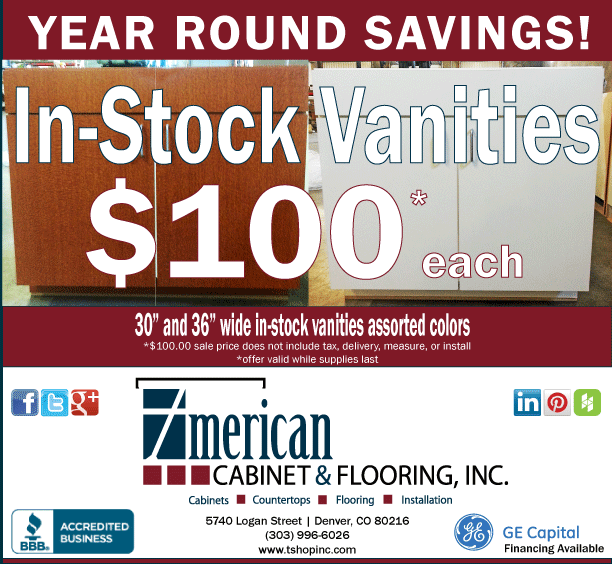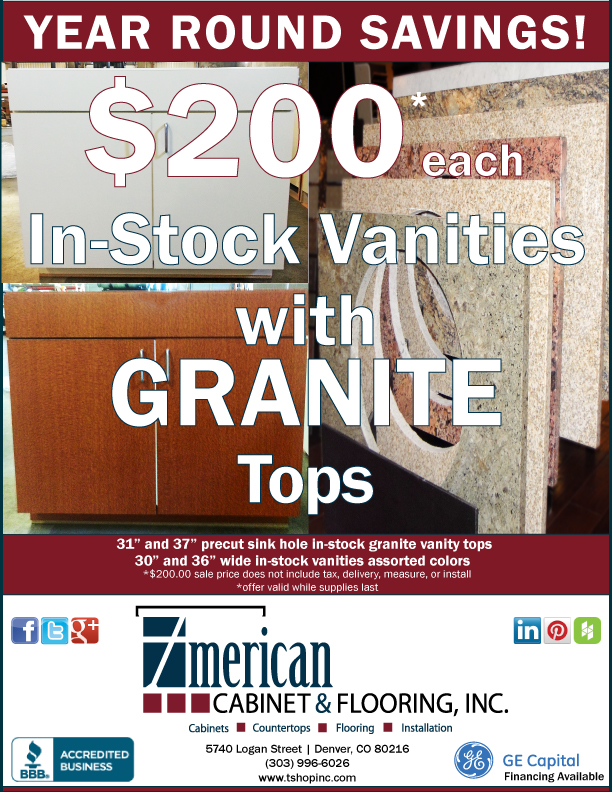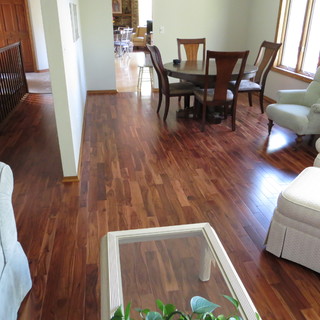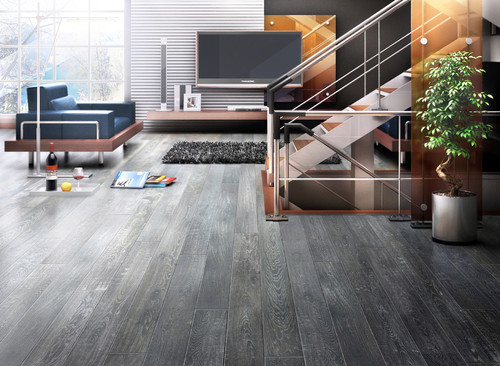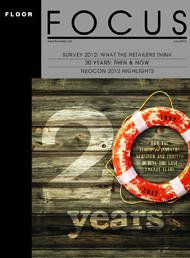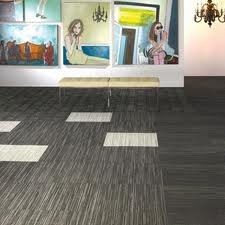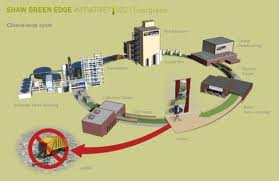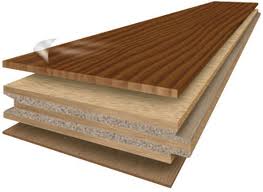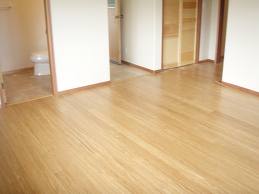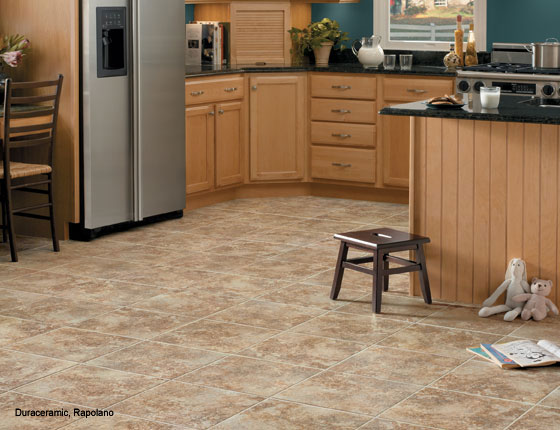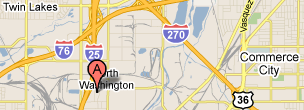What to Ask Before Choosing a Hardwood Floor
 Monday, October 28, 2013 at 11:20AM
Monday, October 28, 2013 at 11:20AM Article By: Mitchell Parker
So you’ve decided to get hardwood floors. Easy enough, right? Pick a wood and be done with it.
Not so fast. There are a lot of factors that will determine what kind of hardwood floor your home can accommodate, and what will look best with your existing or planned furnishings and decor.
You have some basic options: solid wood and engineered wood. Solid wood is what you generally think of as a hardwood floor: thick, solid planks of wood. Engineered wood is made of a veneer layer that sits atop a core of plywood. This construction deals with moisture a bit better and is recommended for concrete slab subfloors. Which brings up another point. The construction of the floor you're working with pretty much will dictate what kind of wood you can use.
Here's how to prepare yourself for choosing a hardwood floor for your home.
1. Where will the wood be going?
Installing hardwood floors on a second story is much different than doing so in a basement. A space beneath ground level is what’s known as below grade. A floor that’s even with the outside ground level is on grade, and any floors above this are above grade. Where you're installing the wood will limit your recommended options.
“For example, you’re not supposed to put solid wood below grade, because the moisture coming up through the ground can cause problems,” says Bob Hagen, who owns Magnus Anderson Hardwood. “So an engineered wood is recommended."
2. What is the subfloor made of?
Find out what kind of subfloor you have. The three most common types are concrete slab, plywood and particleboard. This will help you determine whether you can install solid wood floors, or if an engineered wood would be best.
Concrete. “If you have a concrete slab floor, you’re pretty much limited to engineered wood,” says Andrew Zheng, manager of Unique Wood Floors, which specializes in and ships prefinished hardwood. But don’t fret. You can still get any type of wood in an engineered format. And the thickness of the veneer on engineered wood varies. Higher-end engineered woods "are no less than solid woods in performance and price,” Zheng says.
(Note: Even the hardest woods, such as Brazilian cherry and hard maple, will ding on an engineered floor if the plywood onto which they are veneered is soft, like lauan, which is a commonly used base.)
Another option is to install plywood over the concrete, but you’ll have to pay for the additional plywood, insulation and labor. “Most people just choose to stick with what they have,” Zheng says.
If you’re still not sold on the engineered product, Hagen says there's a way to still have solid wood on a concrete slab (as long as it's on grade). It just needs to be glued down, preferably by an experienced professional.
The downsides are that you need completely flat boards (hard to come by in longer lengths), and the glue is so strong that there’s a permanency to it. “If you have a leak or a flood, getting the material up is incredibly difficult,” Hagen says. “You’ll also want to check the VOCs [volatile organic compounds, which are toxic] in the product. And we ask clients about any chemical sensitivities.”
Plywood. This is probably the most common subfloor and allows for the most versatility with hardwood floors. You can nail solid wood on top or use engineered wood.
Particleboard. This material was commonly used under carpet in homes built in the 1970s. It’s basically a cheaper version of plywood. For hardwood floors, you'll need to replace the particleboard with plywood. Then you can add engineered or solid wood.
3. What are your living habits?
Think about how much abuse your floors will take and learn about specific wood species and their durability. Do you have kids and pets? Have large parties often? Or are you a single person who travels a lot?
If you have a high-traffic house, you’ll want to go with a harder wood. The Janka scale measures how strong a wood is; basically a BB is fired into a plank and the size of the dent it leaves is measured. “Red oak is considered the bell curve,” Hagen says. “It’s pretty hard and medium priced.”
You can also play with grain patterns as well as with stains and finishes that will hide dents and scratches.
4. What style is your home?
You might love the look of hickory but then think differently when you see it covering a floor in a kitchen with modern cabinets. That's because some woods lend themselves better to certain styles.
When choosing a wood, consider cabinets, trimwork and door casings to make sure the wood won’t clash with other design elements. And coordinate with the colors of the walls and the amount of natural light. This will affect color choice. If you have a lot of windows and skylights, then you probably have enough light to balance out really dark floors. If you have a dark house already, a lighter floor choice will help brighten things.
If your style is modern: Natural maple lends itself well to modern styles. “It’s more of a Norwegian-looking design with a clean look and not a lot of variation,” Zheng says. Gray-stained oak and boards without knots create a clean aesthetic that also works in modern settings.
If your style is traditional: Go with something like hickory. "It mixes lighter and darker pieces, and it’s more like a traditional cabin feel," Zheng says. Also, boards with knots and wider planks fit a more traditional style.
Of course, designers do incredibly creative things with mixing old and new, so don’t discount a wood just because it’s considered more appropriate for a certain style. Playing with grain pattern and stains can yield all sorts of interesting results.
5. What’s important to you?
Is budget the biggest factor? Or is the appearance all you care about? Determining what’s most important to you will help you determine the right wood for your floor.
Cost. Engineered wood isn’t always the cheapest route, so don’t think you can’t have solid wood floors on a budget. Zheng says you can purchase generic oak flooring in various stains for $3.50 to $4 per square foot, while lower-end engineered floors start at $2.50 to $3 per square foot. Beautiful hardwood like the popular acacia species can be as high as $6 per square foot.
Maintenance. If you want something that will hold up over time, you'll want to look at the harder woods (with higher Janka ratings). Also pay attention to the stain.
The traditional method for staining wood uses a polyurethane finish, which produces a higher sheen. If the floor gets dinged or scratched, light bouncing off the semigloss finish can exacerbate the appearance of those flaws.
Oil finishes are increasingly becoming more popular these days. They soak into the wood and provide a more matte finish. This can help hide wear and tear; plus, they last longer. While the up-front cost is higher, you won’t need to restain the floor as often, saving you money in the long run.
You can play around with finishes too. Hand-scraped or wire-brushed treatments rough up the appearance, creating a worn look so that if something does scuff it, the mark is not as noticeable. Note that the thickness of the veneer on an engineered floor affects how often it can be sanded down and finished.
Appearance. Everyone's preference is different. Some people are attracted to oak more thanwalnut, and vice versa.
Acacia, shown here, is an exotic wood from Asia that Zheng says is a hot seller right now, because of its mix of lighter and darker tones; plus, it’s harder than hickory. The cost ranges from about $4 to $6 per square foot at his warehouse. The unique look is worth the higher cost for some.
Pay attention to knots and grain pattern. Patterns in hickory and maple are different than in oak. You might want to spend the extra money for a unique grain pattern, or you may want to save money and go with a less-expensive wood with a better stain.
Consider plank width, too, which alters the appearance of your hardwood floors. Wide-plank walnut and 7-inch European oak are popular in traditional homes at the moment.
The best thing you can do is see and feel the wood in person. “Wood is a living species. You need to feel what you’re attracted to. You’re the one living in the house, not the designer pushing you,” says Ilan Zamir, CEO ofAmber Flooring.
6. How will you stain and finish it?
A stain adds color to the wood. The finish protects the floors from getting dirty. Any stain or finish can be applied to almost any wood. Some people like the color of oak but want the grain pattern of walnut. That's where staining can come into play.
Some people can’t tell the difference between unstained black walnut and white oak that's been stained espresso. Others can look at those woods and their grain patterns and immediately know the difference. It all depends on what's important to you.
A finish affects the maintenance. A solid wood that’s been hand scraped for a lower-sheen matte finish is easier to maintain, because you won’t see as much wear and tear. But maybe you want a semigloss look.
Also, purchasing wood that's been prefinished will give you a good idea of what it will look like and will save you the time and effort of finishing the floors onsite. Engineered wood is usually prefinished.
7. How will you test it?
This step is incredibly important. The last thing you want to do is install 800 square feet of black walnut based on a photo or tiny sample you saw in a showroom only to find it's overpoweringly dark and contrasts poorly with your furnishings.
Always ask for a 2- by 2-foot sample of what the floor will look like with a stain and finish on it. Use this to test it with your paint colors and decor to make sure it's exactly what you want.
 Floor Design,
Floor Design,  Flooring,
Flooring,  Hardwood,
Hardwood,  Hardwood Floors in
Hardwood Floors in  Flooring
Flooring 












